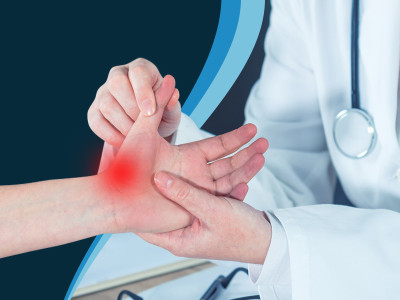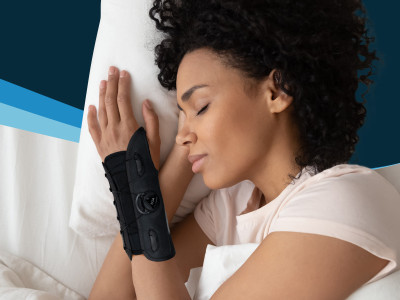Posted by Joe O'Mahony on 14th May 2024
De Quervain’s tenosynovitis may sound like a complex medical term, but for those who have experienced the thumb pain and discomfort associated with it, the condition is all too familiar. The condition affects the motion of the thumb through pain and inflammation, caused by repetitive motion.
In this blog, we will explore the causes and symptoms of de Quervain’s tenosynovitis, along with gentle exercises to help maintain mobility in the joints. We also offer our own effective solution for alleviating pain (click here to skip to the treatment section).
- What is De Quervain's Tenosynovitis?
- Symptoms
- Causes and Risk Factors
- Treatment Methods
- Gentle Exercises
- Conclusion
What is De Quervain's Tenosynovitis?
De Quervain’s tenosynovitis (deh-kwer-vanes ten-oh-sign-oh-vy-tis) is a painful condition relating to the pain felt in the thumb and part of the wrist, caused by repetitive stress put on the thumb.
There are two tendons that connect your thumb to your wrist muscles – these are responsible for the movement of your thumb. Tendons usually slide through a tunnel of tissue known as a ‘sheath’, which lubricates the tendon for more efficient movements. When the thumb is overused or has done a lot of repetitive actions, the tendons (and also the sheath) can become irritated and inflamed.

Symptoms
Symptoms of de Quervain’s tenosynovitis can vary in severity, and not everyone experiences all the symptoms. Common symptoms include:
- Direct pain felt at the base of the thumb - This pain comes on gradually but feels very targeted to a specific area of the thumb.
- Swelling at the base of the thumb (the area of pain)
- Tenderness at the base of the thumb and around the wrist
- Catching/snapping/grinding sensation when moving the affected thumb
An easy way to review your symptoms is to compare the affected thumb with your other thumb – does it look more swollen, does it feel tender to touch, etc.
Causes and Risk Factors
As mentioned earlier, de Quervain’s tenosynovitis is most commonly caused by overuse of the joint through repetitive motions in the hand and wrist. This can vary from an office-based job to racquet sports and gardening – anything that involves lots of repetitive motions of the hand. Other causes include:
- Existing Medical Conditions - Conditions such as rheumatoid arthritis can create a vulnerability to developing De Quervain’s tenosynovitis in one or both thumbs.
- Injury to the Wrist or Thumb Tendons - This can be the cause of inflammation or tendon damage which leads to the symptoms associated with de Quervain’s tenosynovitis.
- Hormone Changes - Hormone changes during pregnancy can cause fluid retention in areas of the body including around the wrist and thumb joints.
The risk of developing de Quervain’s tenosynovitis is increased due to the following factors:
- Sex - Women are more likely to develop de Quervain’s tenosynovitis than men. This is due to hormonal changes (especially during pregnancy) that can cause increased swelling in tendons and joints.
- Age - While the condition can occur in individuals of any age, it is most commonly seen in ages 30 to 50.
- Pregnancy and Childcare - As mentioned before, pregnancy can increase the risk due to hormonal changes and fluid retention, causing inflammation of tendons. The repetitive picking up of a baby also puts additional strain on the thumbs, therefore further increasing the likelihood of developing the condition.
- Jobs and Hobbies - Participating in hobbies or working in environments that involve repetitive hand and wrist motions will increase the risk of developing de Quervain’s tenosynovitis. This applies whether it’s an active sport like tennis or more of a sit-down hobby like knitting/crocheting. Simple actions such as using scissors can also cause discomfort.
Treatment Methods
Joint Immobilisation
Wearing a splint support can help to alleviate multiple symptoms of de Quervain’s tenosynovitis. By immobilising the thumb joint, the amount of strain put on the tendons is reduced, which helps to reduce swelling and gives the opportunity for the affected area to recover. A splint is a great method for preventing further damage to your hand, as it prevents the ability to bend the thumb at multiple joints.
It is common for people suffering from the condition to also wear a thumb support overnight, as the symptoms often cause discomfort and restless nights.
Recommended Splint: Actesso Neoprene Thumb Support
The Actesso Neoprene Thumb Spica Support is the ideal support for relieving symptoms of de Quervain’s tenosynovitis. With two metal splints that run parallel to the thumb tendons, this thumb spica effectively immobilises the thumb joint at the CMC (carpometacarpal) and MP (metacarpophalangeal) joints to prevent further damage from occurring at the tendons.
The soft neoprene material ensures a comfortable, non-scratch experience that makes the support great for wearing throughout the day and overnight. With fully adjustable hook and loop straps, the Actesso Neoprene Thumb Support fits on any sized wrist and can be adjusted to suit the level of compression needed for your wrist. Simply select a colour (Beige or Blue) and which hand requires the support (left or right).
Our thumb support has recently been re-designed, with a more ergonomic splint design that provides effective stability whilst remaining comfortable. Ensure you experience a full and pain-free recovery with the Actesso Neoprene Thumb Support, available to buy now here.
Ice Packs
Applying cold ice packs to the affected thumb can help to reduce swelling around the damaged area, and relieve pain. It is recommended that you wrap the ice pack in a towel for indirect application, and hold it to the base of the wrist for no more than 20 minutes a time a few times a day.
Rest
The most effective method for preventing further injury is to avoid hobbies or tasks that involve the use of your hand and wrist. This means stopping racquet sports and avoiding those repetitive actions that may have initially caused de Quervain’s tenosynovitis to develop. Normal activities can gradually be re-introduced once the condition has passed and all symptoms have disappeared.
Medication
Simple anti-inflammatory and pain-relieving drugs such as Ibuprofen are sometimes used to reduce the amount of swelling. We recommend talking to your local pharmacist or GP for advice before taking any medication, as they can provide tailored advice and recommendations for the severity of your condition.
Gentle Exercises
After the initial pain and symptoms have decreased, these gentle stretches and exercises can help to encourage mobility in the thumb tendons. Stretching exercises can be used over time to return your thumb to its original state, so that you can eventually continue with your regular hobbies and activities.
Exercise One - Thumb 'C' Bend
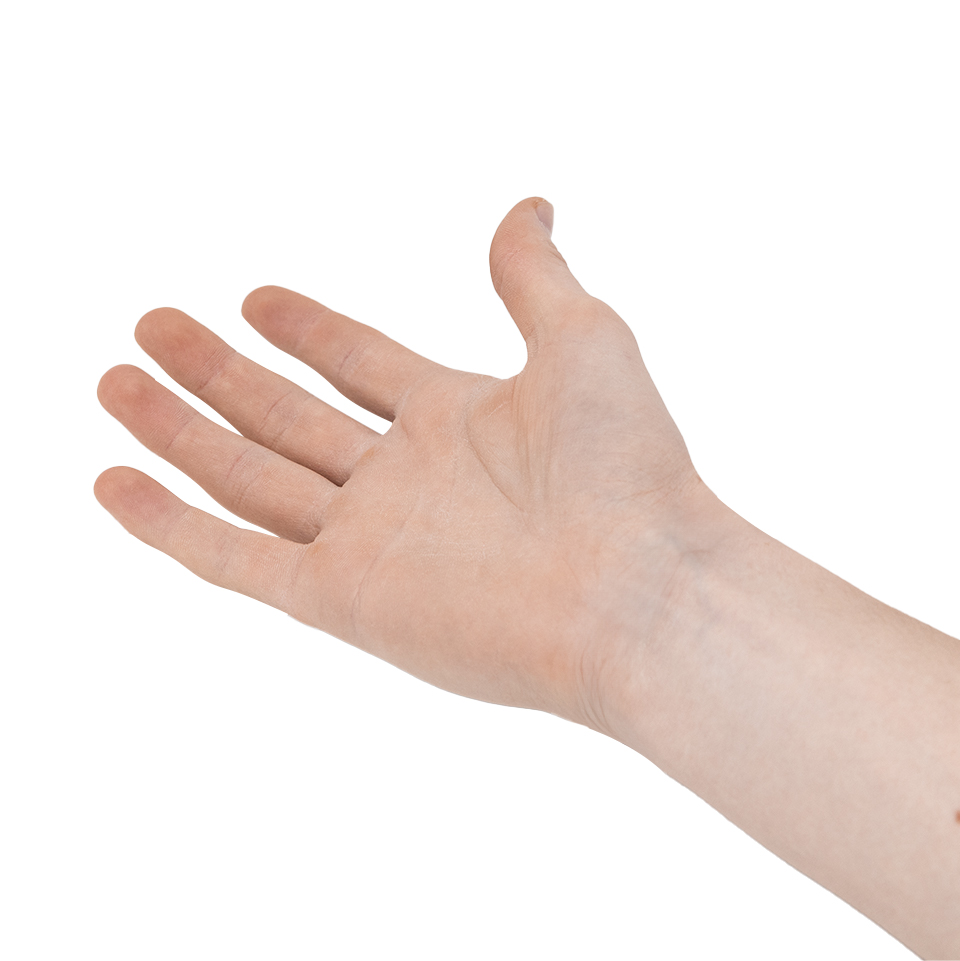
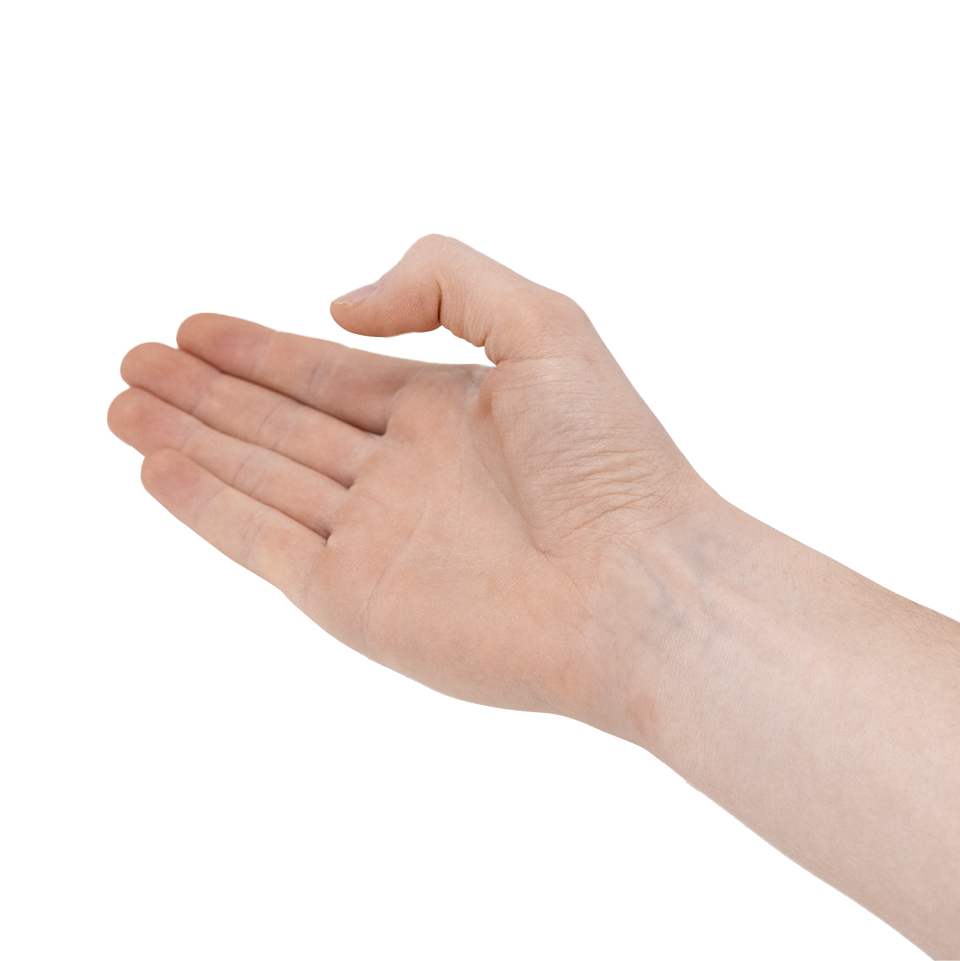
- Rest your hand on a table surface, with your palm facing upwards.
- Lift your thumb up and away from your palm. This should create a ‘C’ shape out of your thumb
- Hold this position for 5 seconds, and then return to the starting position.
- Repeat the exercise up to 10 times.
Exercise Two - Thumb to Pinky Stretch

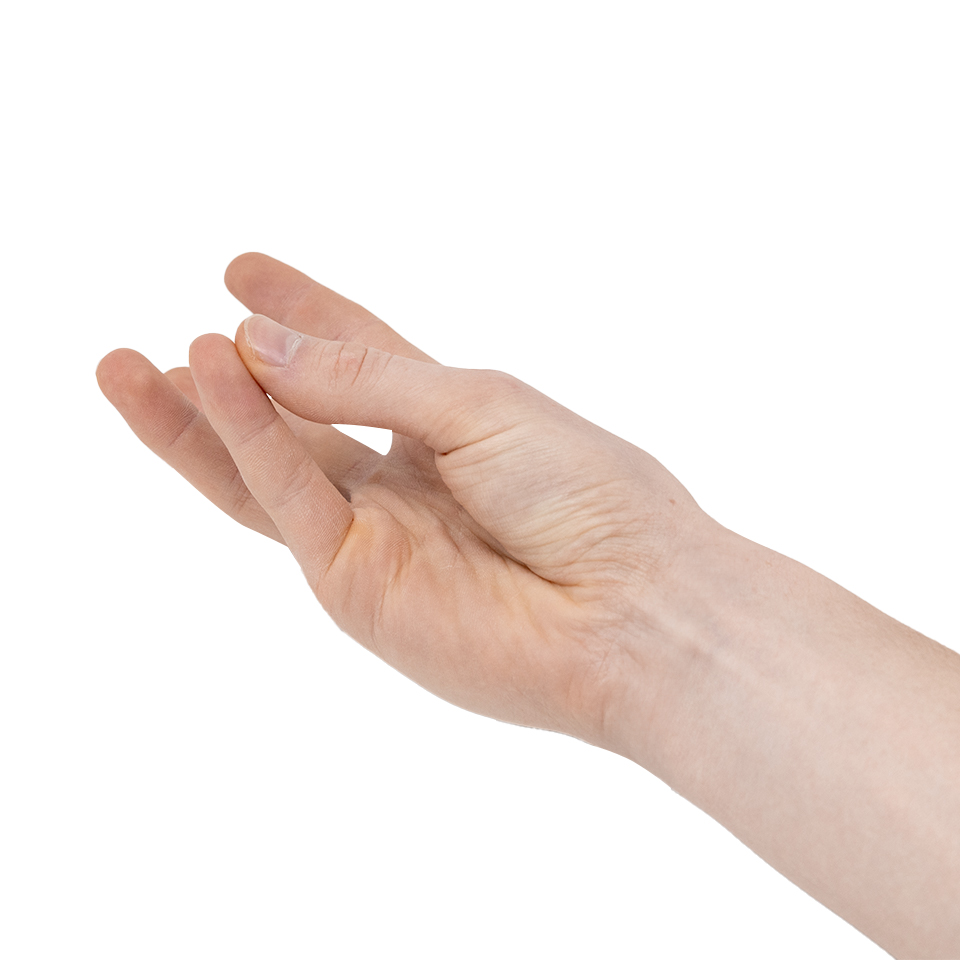
- Rest your hand on a table surface, with your palm facing upwards.
- Lift your thumb and little (pinky) finger upwards, so they meet each other in the middle.
- Touch your thumb and little finger together if you can do so comfortably (if they cannot meet, try to hold them as close as possible without causing excessive pain).
- Rest your hand on a table surface, with your palm facing upwards.
- Rest your hand on a table surface, with your palm facing upwards.
Exercise Three - Grip Squeeze

- Hold the object in one hand. (This can be a stress ball or something like a rolled-up pair of socks. Anything soft with some resistance.)
- Squeeze the object with all fingers for 4 to 6 seconds, then relax your fingers and release. (Squeeze as much as you feel is comfortably possible. If you feel the pain worsen too much as you squeeze, try the exercise more gently.)
- Repeat for 8 to 10 times.
Exercise Four - Resistance Thumb Stretch

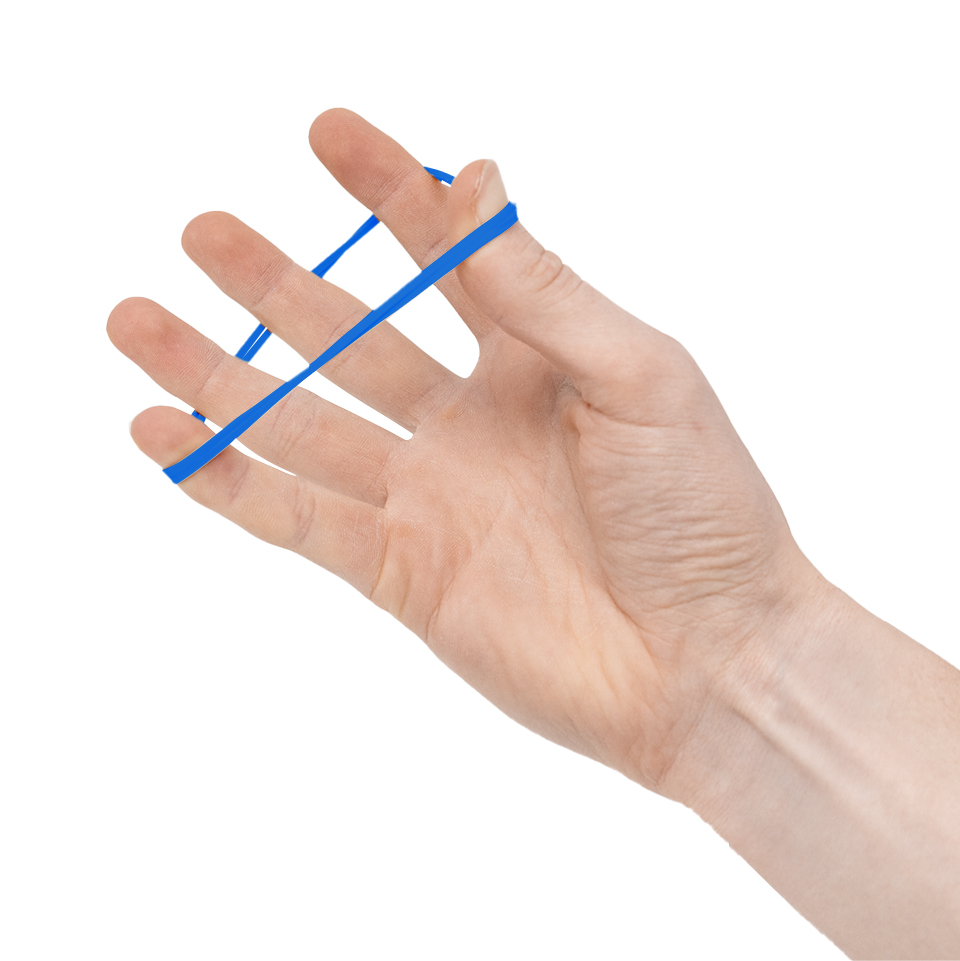
- Wrap an elasticated band (a rubber band or a hair band) around your fingers and thumb on the affected hand. This should hold your fingers close together with some resistance.
- Slowly open your hand, pushing against the elastic band. You should feel some resistance against your thumb movement.
- Hold the open hand position for a few seconds, then slowly close your hand.
- Repeat this for a total of 10 times, then relax.
Conclusion
In conclusion, De Quervain's tenosynovitis can be a painful condition, impacting thumb and wrist mobility due to repetitive stress. Understanding its causes, symptoms, and risk factors is a key step in pain management and recovery. For effective relief, consider joint immobilisation through splint support, such as the Actesso Neoprene Thumb Support. This specially designed support provides comfort and stability, aiding in recovery from de Quervain’s tenosynovitis.
Disclaimer: We are not qualified medical professionals. All information stated from this article has been taken from reputable sources.


